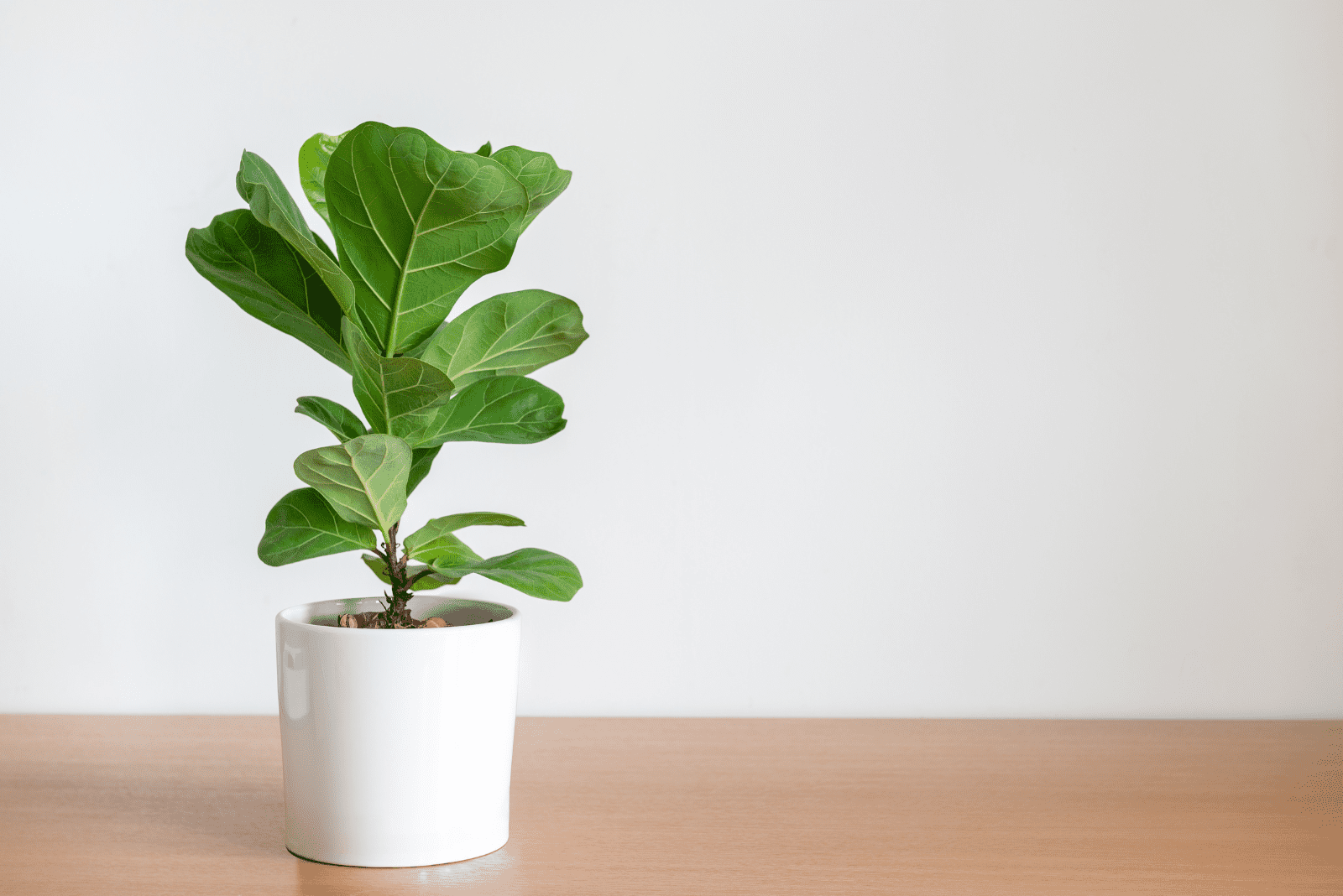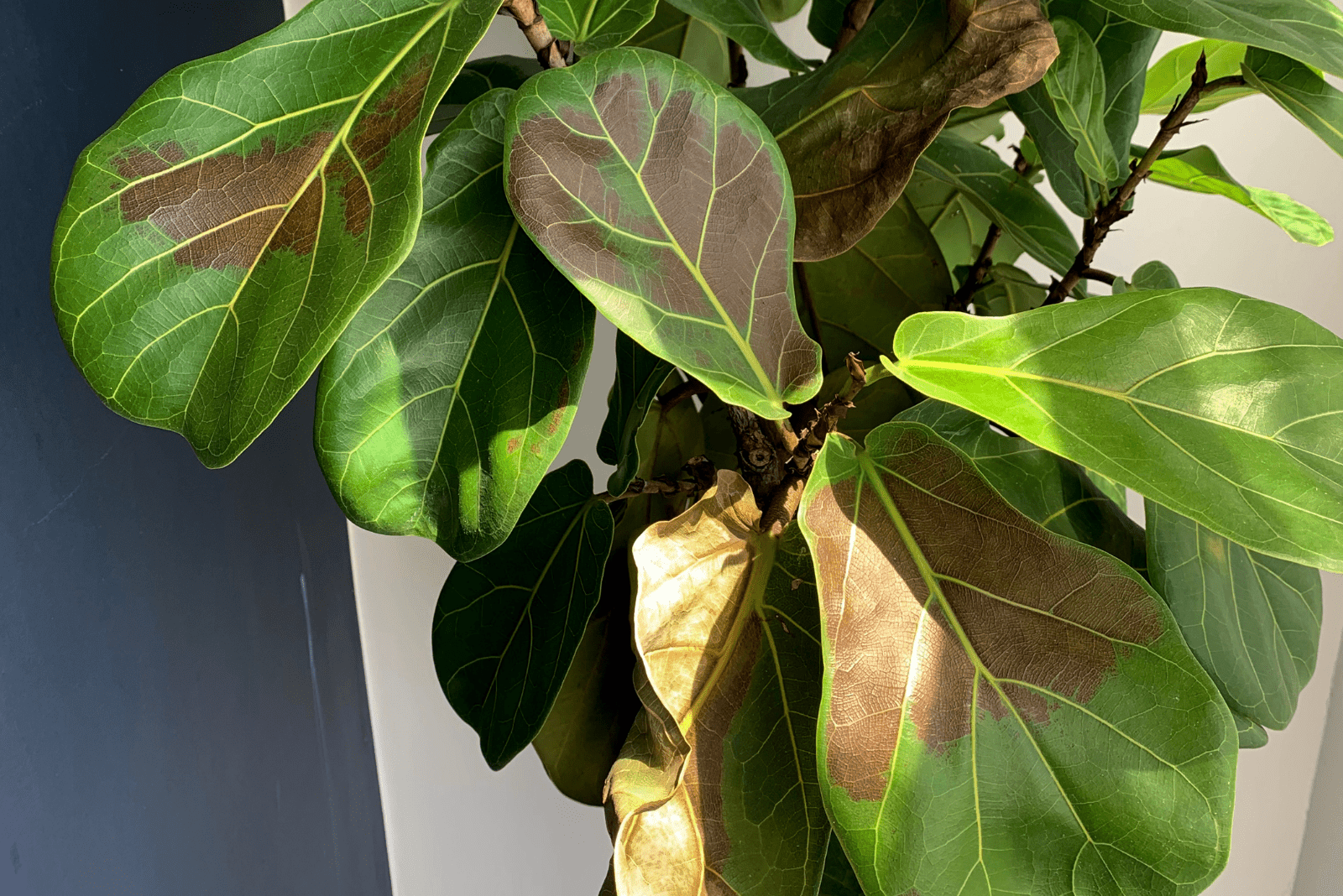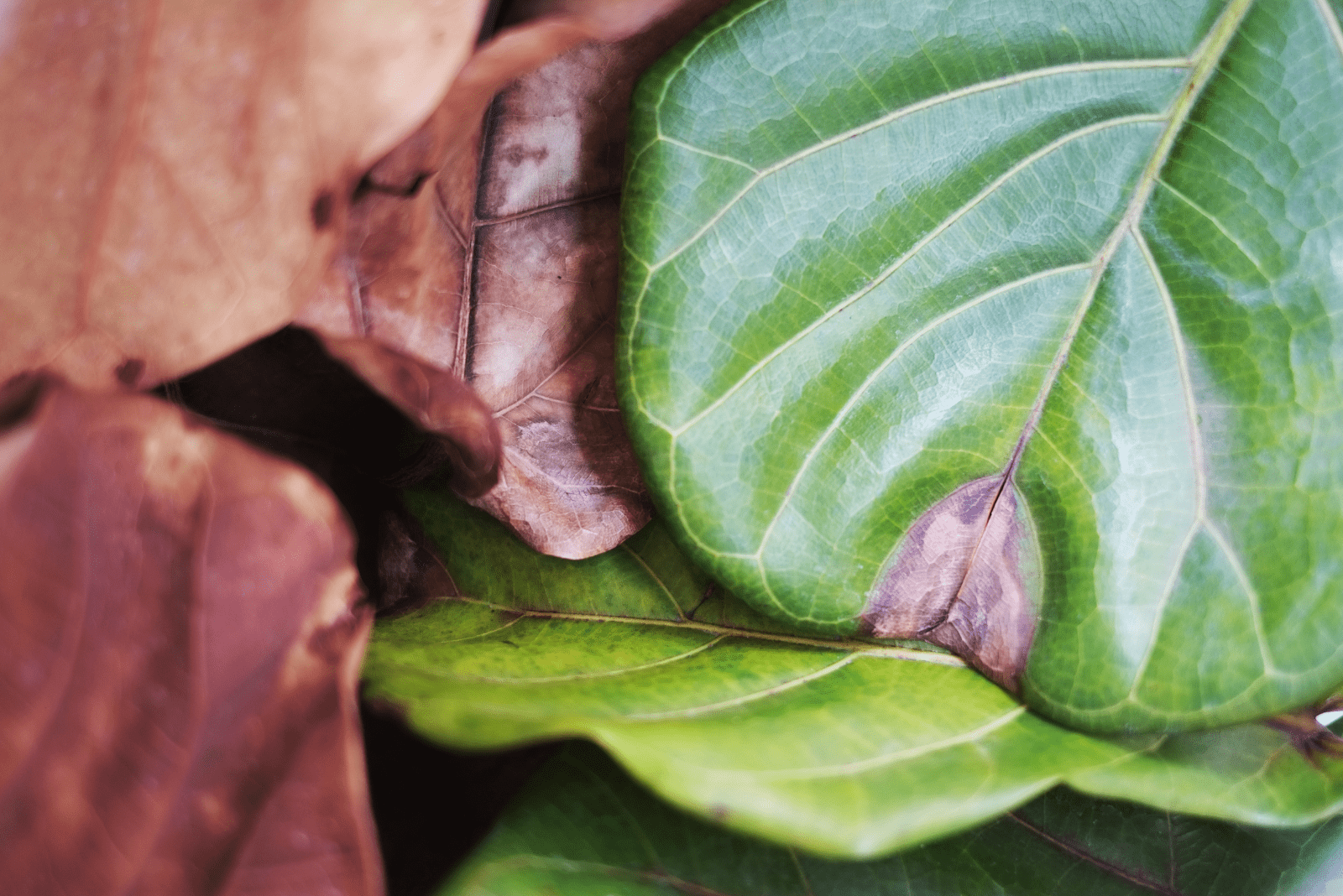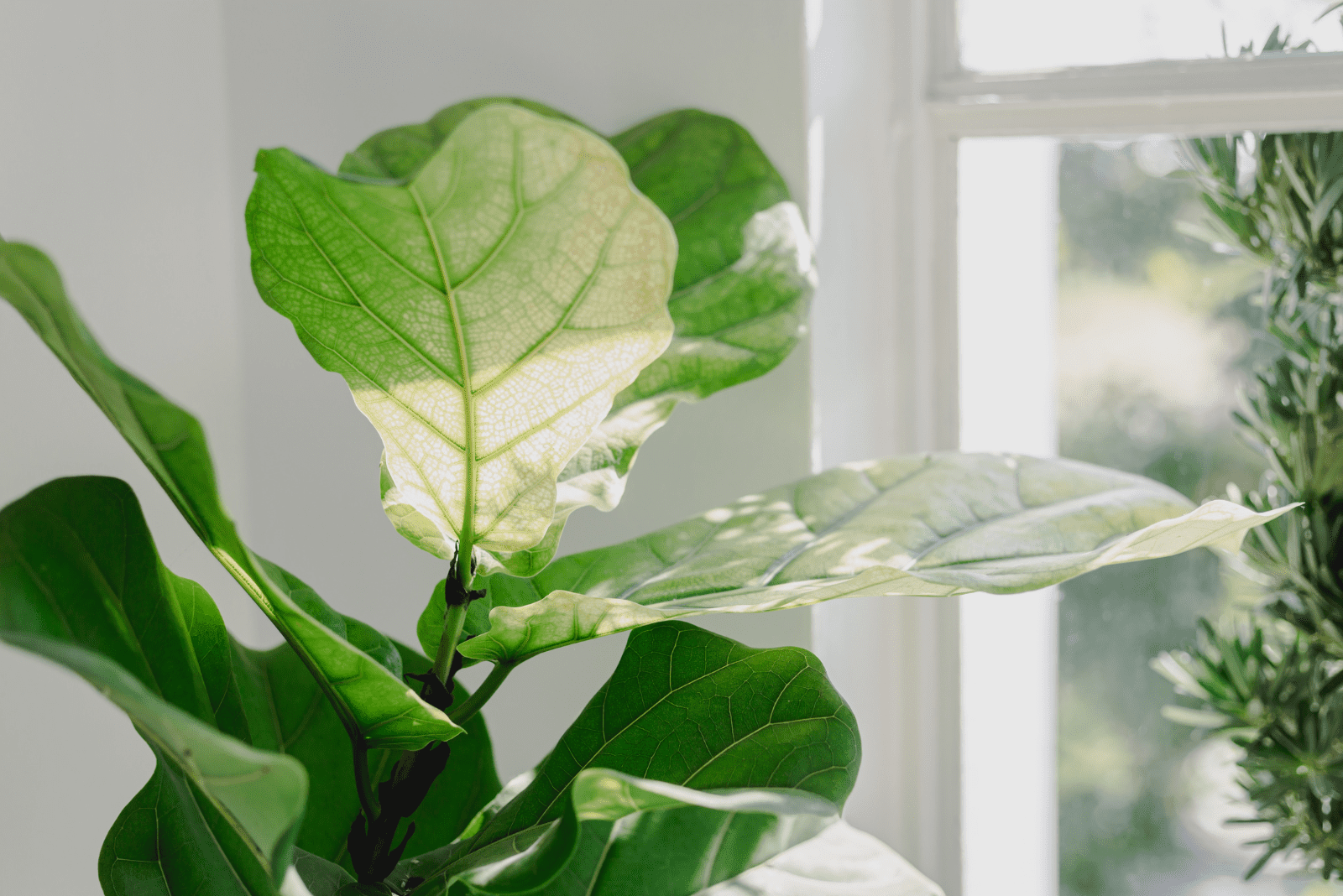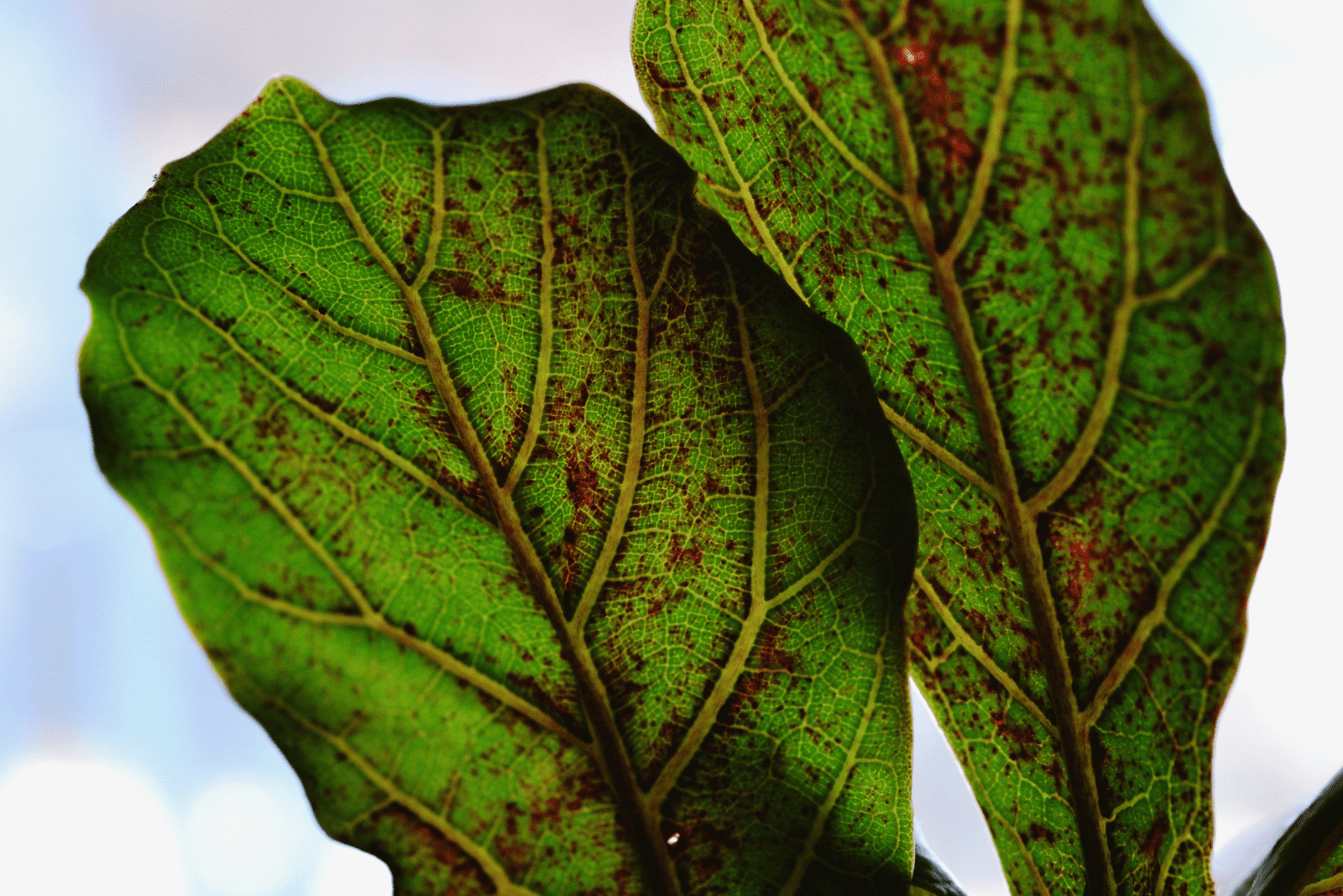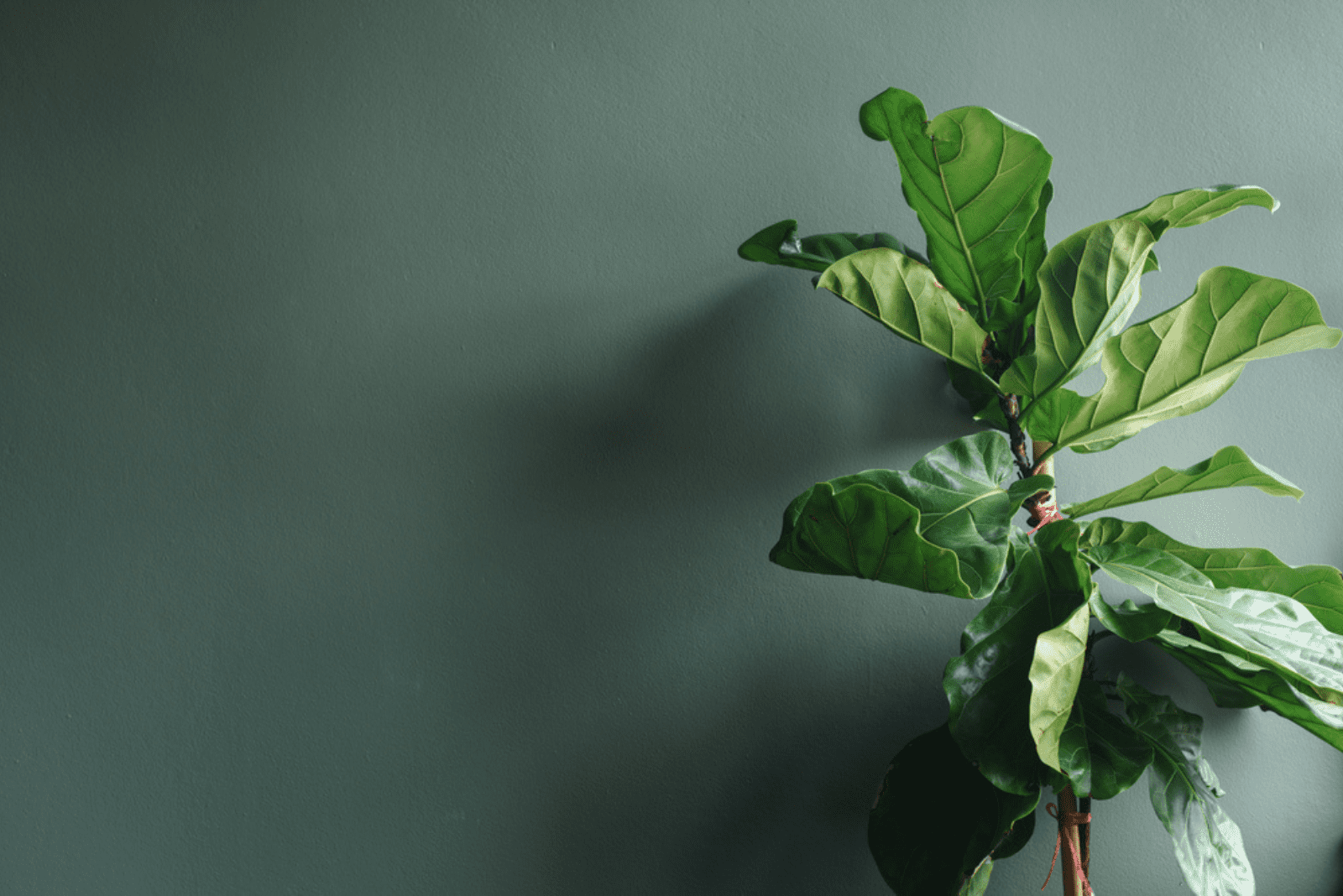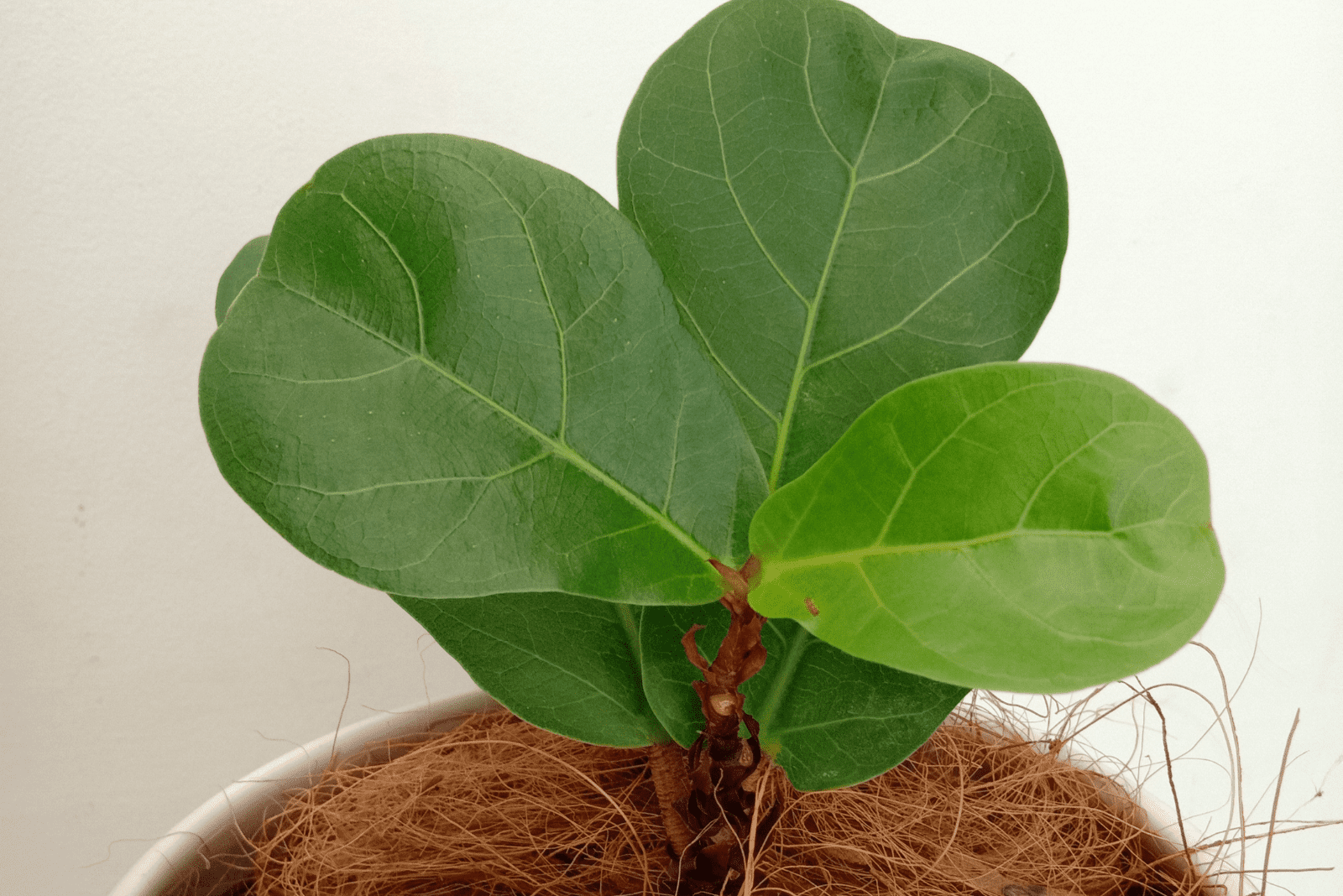The Ficus Lyrata, commonly known as Fiddle Leaf Fig, is a popular houseplant nowadays, especially because it produces magnificent large green leaves that fit well into any home decor!
Once you buy a brand new plant, the most important thing is learning about its plant care. You should carefully research your new plant’s requirements and provide them with the best possible growing conditions to keep them happy and healthy!
If something isn’t right with your plant, it will definitely find a way to tell you.
As the Fiddle Leaf Fig is all about leaves, any leaf discoloration or curling might be a sign that there is something wrong with your plant.
But, don’t panic!
Fiddle Leaf Fig problems are usually easy to fix, and your plant will look as good as new before you know it. Keep on reading to find out about these problems, as well as how to fix them!
Common Fiddle Leaf Fig Problems
The most common Fiddle Leaf Fig problems usually arise due to improper plant care, and you should also know that this indoor plant is susceptible to various pest infestations that can absolutely devour it.
Any leaf discoloration, spotting, drooping, or wilting are all signs that your plant is struggling with issues such as low humidity, spider mites infestation, or too much sun exposure.
You should carefully examine your plant to get to the bottom of the issue, and then try and fix it!
1. Brown Edges Of The Leaf
You are probably used to seeing those beautiful green leaves every day… but then you notice that the edges of the leaves have started turning brown.
There could be several possible causes of this issue, but they all eventually come down to improper plant care conditions. The leaves will also start to curl up, so keep that in mind as well!
Possible Causes
• Low humidity levels — this is a common issue in regions with dry climates. Even though this plant does not require an extremely humid environment, they still need some air moisture to keep them thriving!
• Underwatering — if you have skipped a few watering sessions, your plant will definitely find a way to tell you that it is thirsty! One of the first signs is the leaves’ edges browning and curling. So, if you haven’t been watering your plant, go grab a watering can right now!
• Accidental Damage — if your plant’s leaves have been exposed to some physical damage, they will start turning brown. These plants are extremely delicate, and any minor knock can affect their looks and health.
How To Fix
These issues are easily fixed. If the humidity is the troublemaker, boost it by investing in a humidifier or misting your plant. Bear in mind that this plant prefers humidity levels between 30% to 65%.
If underwatering is an issue, make sure to create the perfect watering schedule and stick to it! You can even set a reminder to help you remember to water your plants.
You can either check if the top few inches of the soil are dry before watering, or even lift the pot to see if it is lightweight. Water the plant in both cases.
To avoid accidental damage, try to find a place in your home that is not prone to constant traffic.
2. Yellow Leaves
It is not uncommon for houseplants to start developing yellow leaves, especially the lower leaves that grow at the bottom of a plant. Similarly to the previous issue, yellow leaves also occur for different reasons, though it is often linked to inadequate watering.
Yellowing leaves are often the first signs that your plant is dealing with some kind of an issue or disease, and in most cases the disease might progress and affect the entire plant.
Possible Causes
• Overwatering — quite the opposite to underwatering, frequently watering your plant often leads to bigger issues, especially if your plant doesn’t like growing in soggy soil. When you keep watering your plant frequently, soggy soil attracts various pests and fungi. In most cases, overwatering leads to root rot, which is a deadly fungal disease that can completely destroy your plant.
• Bacterial infection/fungal infection — in this case, the entire leaf won’t turn yellow, but instead there will be yellow patches in addition to brown spots and discolorations.
• Natural aging — some leaves will turn yellow and simply fall off due to natural aging. But don’t worry because new leaves are going to be produced soon and replace the older leaves!
• Underfertilization — lack of plant food might also be one of the possible causes. Nutrient starved plants occasionally redistribute resources from less productive leaves to others, or use them to support new growth at the top.
How To Fix
To fix overwatering, you should simply let the soil dry out completely before watering it again. If the soil starts to smell, then you should repot the plant and see if you can trim off any mushy or brown roots.
From now on, always check if the top few inches have dried out completely before watering the plant again because too much water can seriously affect it, especially if they’re growing in a humid environment.
You should also grow your Fiddle Leaf Fig tree in a pot that has drainage holes in the bottom — these are crucial for proper drainage and removing excess water from the potting soil.
In case of an infection, make sure to carefully examine the plant and determine the culprit. To fix the fungal infection, you can use different fungicides such as copper fungicide or neem oil, which is kind of a more organic option.
There is nothing you can do about natural aging, just make sure that your plant receives the best possible plant care!
When it comes to fertilizing a Fiddle Leaf Fig plant, I would recommend you use a liquid fertilizer with an NPK formula of 3-1-2 — dilute this fertilizer to half strength and apply it once a month during the growing season.
3. Crispy & Brown Leaves
Almost all Fiddle Leaf Fig leaves will end up looking like this — completely brown, dry, and crispy!
Completely brown leaves and brown spots on the leaves are two different things, so make sure that you identify the problem before acting on it!
Brown leaves are a natural occurrence in almost every houseplant, and all you have to do is simply remove the leaf or let it fall off on its own.
Possible Causes
• Natural aging — if the leaves that have turned yellow due to natural aging haven’t fallen off, they will eventually turn brown and crispy. This happens naturally, and you shouldn’t be worried as long as new leaves are being produced.
• Other issues — all these issues will eventually lead to completely brown leaves if they aren’t treated properly because all brown and damaged leaves are signs of the plant dying. Once you spot any discoloration, examine the plant carefully.
• Different locations — these plants are not a fan of change, and if you keep moving them to other areas with different light and temperature conditions, then they might show signs of discomfort like leaves turning brown. This usually happens because the plant takes time to adapt to the new growing conditions.
How To Fix
There is basically nothing that you can do about natural aging unless there is some anti-aging cream for plants that I am not aware of! In this case, simply remove the affected leaves.
If you notice any weird patches and spots on the leaves, carefully examine the plant and see if there are any pest infestations.
If you keep moving your plant to different locations, make sure that you find a place where it can get enough light and where the temperature is satisfying. This ficus needs a little bit of direct sunlight in the morning, but make sure that it receives bright indirect light for the rest of the day to avoid sunburn.
4. Brown Spots
Unfortunately, the most common issues when it comes to growing Fiddle Leaf Figs are brown spots on the leaves. These can be light brown or dark brown, and they are usually shaped like spots or patches.
There are several causes of brown spots, so you have to carefully examine the plant for any pest infestation. Make sure you have been growing your plant with proper care because many issues arise if you don’t treat your plant properly.
Please keep in mind that brown spots are often associated with root rot, so please check the soil first before considering any other cause because root rot can kill your plant.
Possible Causes
• Root rot — as we previously mentioned, this is a deadly fungal infection caused by overwatering and improper drainage. Root rot is usually manifested by the yellowing of leaves and a funky smell in the soil because the roots start decaying.
• Overwatering — overwatering and root rot sort of come as a package if you continue to give your plant too much water. However, inadequate potting mix that isn’t sufficiently draining can also contribute to overwatering.
• Sunburn — if you notice any yellow to light brown patches on the upper leaves, then your plant has probably been exposed to direct sunlight for too long. Although FLF plants need some sun for photosynthesis, if you keep them exposed to direct sun for the whole day it will damage the pretty green leaves. This can also happen if you suddenly change their location to somewhere they get more direct sun.
• Bacterial infection — similarly to root rot infection, the bottom leaves will start to change color. In this case, the spots usually have a brown to almost black color, though some might be light brown (depending on the infection). If you haven’t exposed your plant to direct sun, then you are probably dealing with a bacterial infection.
• Pest infestation — brown spots can also indicate a pest infestation. Your plant is prone to mealybugs, spider mites, fungus gnats, and aphids. Check the underside of the leaves to see if there are any pests there, and keep reading to identify each of these annoyances.
• Overfertilization — if you apply too much fertilizer (especially during the winter season), chemicals will build up in the soil and prevent the roots from functioning normally. One of the signs of overfertilization is brown spots and leaf drops.
How To Fix
There is no other way to fix root rot than repotting. You must buy a new pot and fresh soil, and make sure you carefully examine the root ball when repotting. If you notice any mushy or decaying roots, use sterile pruning shears to cut them off.
If the root rot infection is severe and repotting can’t save your plant, then you should at least try your luck with propagation and start from scratch.
Overwatering and root rot can be prevented if you stick to the perfect watering regimen.
A few hours of direct sunlight in the morning should be enough for your Fiddle Leaf Fig plant, just make sure you keep it in bright indirect light for the rest of the day.
Leaves damaged by a bacterial infection should be removed to prevent spreading, and then you should repot your plant into a new pot and fresh soil that isn’t contaminated.
To avoid overfertilization, carefully follow the instructions on the fertilizer’s packaging. I usually fertilize my FLF plant once a month during the growing season. You should avoid fertilizing during the winter season as these plants go dormant and don’t require much nutrients or water.
Pest infestations are usually dealt with pesticides or some other type of natural pest repellent such as neem oil or vinegar.
5. Droopy Leaves
If your plant suddenly has droopy leaves and it looks like it is wilting, then it was probably exposed to some type of shock (transplant shock, for instance).
Though there are some plants that need watering more frequently, which might have droopy leaves as soon as you skip one watering session!
Don’t worry, your plant will look happy and healthy as soon as you fix the issue!
Possible Causes
• Inadequate watering — if you give your plant too much water and grow it in a pot with no drainage holes in the bottom, you might suffocate it. On the contrary, if you don’t water your plant during hot summer days, it will start to wilt.
• Repotting — it is not unusual for plants to suffer from transplant shock, especially if you have repotted it for the first time. Your plant needs time to adapt to the new environment, which is why it might look sad and droopy.
How To Fix
As temperature and humidity also affect water requirements, please note that you might have to water your Fiddle Leaf Fig plant more frequently during the summer season.
When repotting your Fiddle Leaf Fig, be careful not to damage its roots — this is especially important if you are dealing with a young plant whose roots have not yet been established.
6. Pests
As we already mentioned, various pests can infest your precious plant. The best way to prevent these annoyances from invading your plant is by strictly following the Fiddle Leaf Fig care guide.
If you do notice any change in your plant, I would recommend you investigate the plant and look for any signs of pest infestations. Bear in mind that some of them are not visible with the naked eye, so you might need a magnifying glass!
Possible Pests
• Mealybugs — any white spots on the plant might indicate a mealybugs infestation. These little creatures tend to settle in the nodes, so you should check these parts of the plant first.
• Scales — the body of scales are distinctively formed like brown discs. On occasion, these insects have a waxy coating that makes them look like white cottony tufts adhered to the plant’s leaves. Scales love to consume plant juice and steal all of their nutrients!
• Spider mites — these are microscopic creatures that settle on the underside of leaves. These plants like low humidity and dryness, so they will likely infest plants grown in these conditions. If you notice any webbing on the plant, you should immediately look at the underside of the leaves and see if there are any colonies of spider mites there. Female spider mites also lay eggs in the soil, so you might have to repot the plant.
• Aphids — microscopic pests known as aphids frequently leave sticky residue on the leaves. Despite their small size, these vile critters can severely harm your Fiddle Leaf Fig plant. Normal leaf yellowing and curling are accompanied by a sticky material. Wilting is frequently the outcome of severe infestations.
• Fungus gnats — plant flies, otherwise known as fungus gnats, usually damage indoor plants. They contaminate organic matter, potting soil, soil, and other sources of organic decomposition. Their larvae eat roots and may be a problem in nurseries, greenhouses, and indoor plants. They are attracted to drains, moist soil, unwell plants, and organic debris in the soil.
How To Fix
Mealybugs are easily treated with insecticides or insecticidal soaps.
Typically, scales are eliminated from plants by blasting them with water. An application of insecticidal soap is required if the infestation is severe or the insects return.
When it comes to a spider mites infestation, they are often treated with neem oil, rubbing alcohol, hydrogen peroxide, or insecticidal soap. There are some alternative methods like letting the soil completely dry out, repotting, and also introducing natural predators.
An aphid infestation is often treated similarly to spider mites — you can apply pesticides, use neem oil, or try to pick them off by hand (though this is tough because they are extremely small).
There are a few methods for getting rid of plant flies. For instance, there are various fly traps that work efficiently, you can add gravel to the soil surface, and also introduce plant fly predators. The best way to prevent a plant fly infestation is by keeping your space clean, and also making sure that you aren’t overwatering or overfertilizing your FLF plant.
7. Black Patches
Black and purple patches around the edges of the leaves can appear for two reasons: overwatering and cold damage, though sometimes black spots might also appear due to root rot.
Possible Causes
• Cold damage — black patches might appear because the temperature was too low. This can happen if you keep your Fiddle Leaf Fig outside during the winter season when temperatures drop below 50 Fahrenheit degrees or if your plant has been exposed to cold drafts from air conditioning or vents.
• Overwatering — black patches occur if you were overwatering your plant for a long period of time. Black leaves are often associated with root rot, so you should definitely investigate the roots and consider repotting.
How To Fix
Fiddle Leaf Fig plants require temperatures ranging from 60 to 80 degrees Fahrenheit. Though they can tolerate lower temperatures, these plants are not frost-hardy and will be seriously damaged if you keep them in temperatures lower than 50 degrees Fahrenheit.
They are also not fans of sudden temperature changes, and you should keep them away from cold drafts and other intense heat sources like a fireplace or space heater.
When it comes to watering, everything stays the same — always check if the topsoil is dry before watering the plant.
8. Red Spots
Red spots (or light brown) patches that develop mostly on the new leaves are known as Edema, also spelled Oedema. It might look like a rust patch on established new leaves.
Luckily, this is not a serious issue that can permanently damage your plant. In most cases, these red spots will disappear on their own.
There is no need to trim off any affected leaves, and in most cases these spots are tiny, so they won’t even change your plant’s appearance.
The underlying cause is typically a severe imbalance between the chemical processes occurring in the plant via diffusion or osmosis and those involving water and new development. The cells are ruptured by this imbalance, resulting in visible marks and spots.
Possible Causes
• Overfertilization — the chemicals present in fertilizers will build up in the soil if you keep applying too much. They prevent the normal functioning of the roots and also affect the usual chemical balance in the plant.
• Overwatering — soggy soil can also impede normal biochemical processes in the plant because the roots will absorb more water than it needs to conduct those processes.
• High humidity — similarly to overwatering, the leaves will absorb more water from the air, which eventually results in a lack of transpiration (a crucial process that involves water evaporation through stomata).
How To Fix
Use the previously mentioned trick when it comes to watering, keep the humidity levels lower than 70%, and apply liquid fertilizer once a month during the growing season.
9. Curling Leaves
Sometimes, the large Fiddle Leaf Fig leaves might start curling inwards or outwards. This can happen for several reasons, though it is often followed by leaf edges turning brown.
But don’t worry, the leaves won’t stay curly for a long period of time if you find out what is causing the issue and fix it!
Your plant will bounce back in no time and look as good as new!
Possible Causes
• Inadequate watering — curling leaves often occur due to improper watering habits. If your plant is underwatered, the leaves will curl inwards to save water in the leaves. On the contrary, they will start to curl outwards if you are overwatering your plant.
• Nutrient deficiency — your plant needs Phosphorus, Nitrogen, and Potassium to thrive. If your plant doesn’t receive these nutrients, the leaves might start to curl up.
• Low humidity — just like with underwatering, the leaves might start to curl inwards to retain moisture.
• Type of water — tap water contains additives like salts, calcium carbonate, fluoride, and chlorine that can possibly harm your plant. For instance, too much calcium carbonate and salt can accumulate in the soil, clogging the roots and forcing them to release the water they have absorbed back into the soil. Fluoride can prevent photosynthesis, which leaves your plant with no glucose and no energy.
• Incorrect pot size — Overwatering is more likely if the container is too large because the soil will retain too much moisture and minerals. On the other hand, if the pot is too tiny, your fig will become pot-bound, and if there isn’t enough soil in the pot it won’t get enough nutrients, which causes its root system to stop functioning.
How To Fix
We’ve spoken about watering and fertilization at length, though I would suggest you use another type of water for your plant. For instance, you can switch to distilled or filtered water, or collect rainwater , which does wonders!
If you notice that the roots have started coming out of the drainage holes, then it’s time for repotting. This means that you will have to buy a new pot about two inches larger than the previous one.
10. Crooked Stem
This Ficus plant needs sunlight to conduct photosynthesis, and it will try anything in its power to get some sun!
If you don’t provide your FLF plant with enough light, it will start to bend towards the light. You will notice that the leaves have started to turn first, and if the plant stays that way for a while, the stem will also bend.
However, lighting is not the only cause. Let’s look at what actually happens.
Possible Causes
• Inadequate lighting conditions — the leaves and stem will bend toward the light source to catch the sunlight. When the light is coming from above, it doesn’t cause an issue because the plant just grows straight up, but if the window is the main source of light, expect some bending.
• Natural growth — the central stem will grow upward, and any other side branches simply won’t grow in the same manner. By doing this, the amount of light that reaches the leaves is increased while the amount of competition for light is decreased.
How To Fix
To avoid the plant bending toward the light source, I would recommend you rotate the plant every couple of weeks — do a 1/4 turn each time so that every side of the plant gets some sunlight.
11. Leaves Are Too Small
The Fiddle Leaf Fig plant is famous for its large leaves… so why do some of them produce small leaves?
Sure, every young leaf will be small and green, but it will grow larger as time goes by. This is a completely normal process that happens with every plant.
But what should you do when these leaves stay small and eventually fall off?
This indicates that there is something wrong with your plant and its growing conditions. Don’t worry, this is easily fixable and your plant will start producing large leaves again!
Possible Causes
• Dwarf variety — there is a dwarf variety of FLF plants available online and in stores, so you might have bought one without realizing. The dwarf variety will be smaller in size and also produce smaller leaves.
• Pests — leaves that fall off before they have matured are possibly being attacked by pests that steal their nutrients, so they are not able to develop properly. Check the underside of the leaves and carefully examine the surface of the leaves.
• Underfertilization — the plant might simply not have enough nutrients to produce large and compact leaves. Nitrogen is crucial for leaf development, and if your plant is lacking it you will probably end up with small Fiddle Leaf Fig leaves.
• Time of year — once your plant enters dormancy (when the winter season arrives), it will have much slower growth and development. This also affects the new leaves, so you might have to wait until the growing season arrives!
• Low light — small leaves are very typical when the light levels are too low. You need to offer adequate light levels for plants in order to grow big and healthy. Put your plant as close to a window as you can, or use a grow lamp to supplement.
How To Fix
If you want to make sure that you are not buying a dwarf variety, always make sure to ask first because most plants are young and small when you buy them for the first time. I had this issue with some succulents, and now I specifically ask for tall succulent types!
Look back at the pest section to learn how to fix those issues.
When it comes to fertilization, always make sure that you are using a fertilizer with an NPK formula.
Always provide your Fiddle Leaf Fig plant with enough bright indirect light, and don’t forget to rotate it every couple of weeks!
Conclusion
Don’t let these FIddle Leaf Fig problems stop you from buying one for your home!
These issues are easily fixable, and your plant can bounce back quickly and look as good as new. The majority of these issues are caused by improper plant care, so I would suggest you make sure that you always meet your plant’s needs.
Luckily, this plant is not very needy and can tolerate various conditions.
Bear in mind that pests will most likely attack the plant that is already fragile, so make sure to keep your plant happy and healthy.
I hope this article was helpful.
Until next time!
Like this post? Share or pin it for later!

